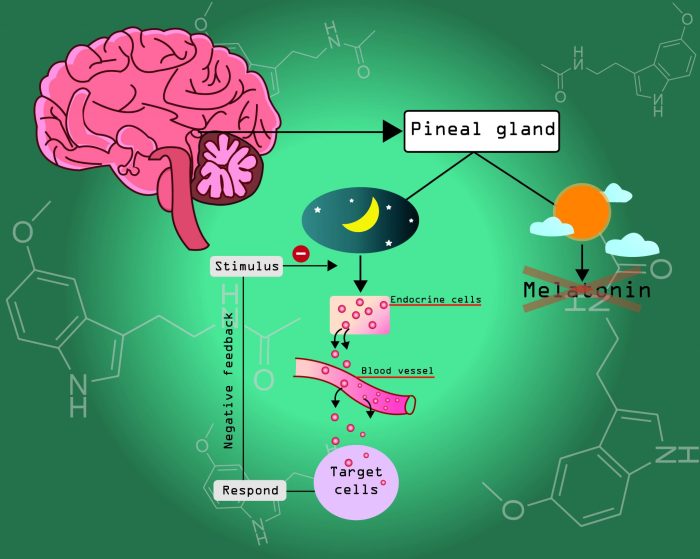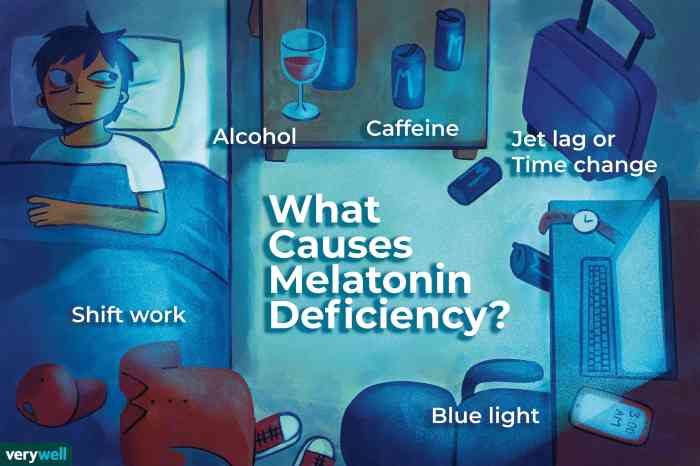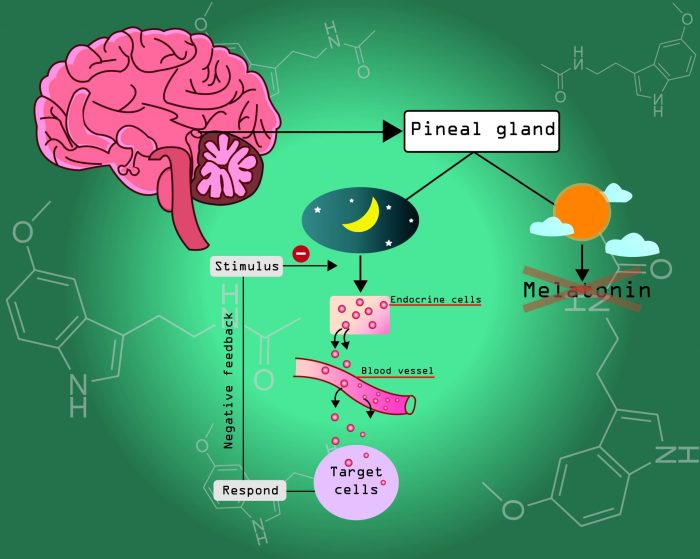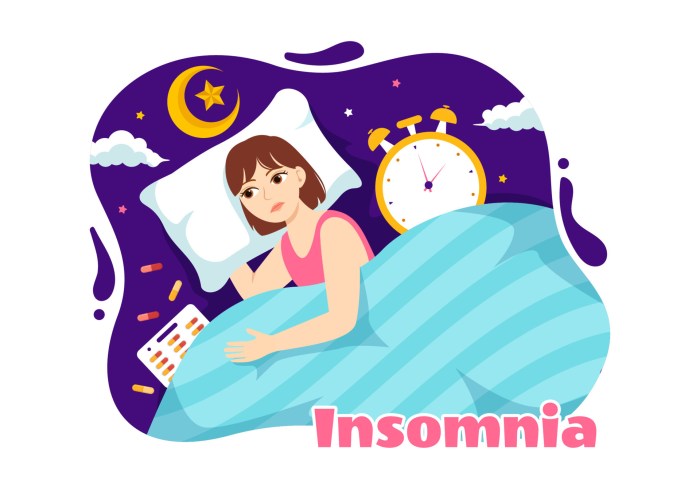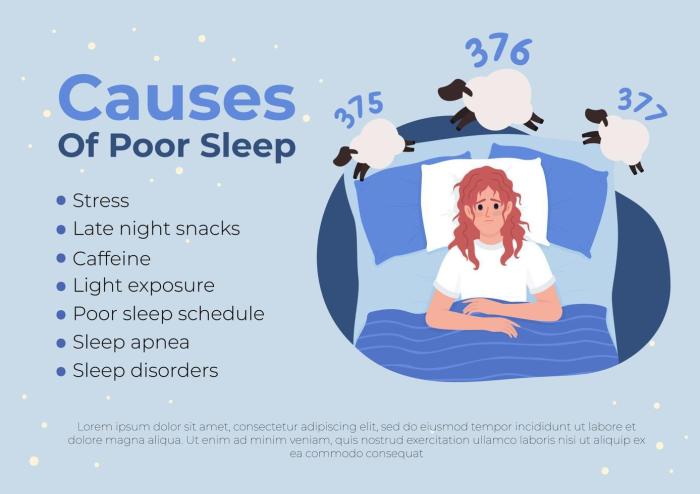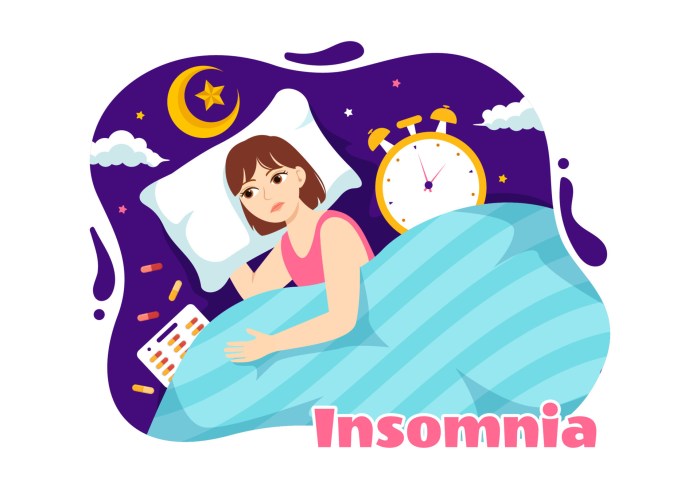Why do people sleepwalk? This seemingly simple question delves into the fascinating world of sleep disorders, revealing the complex interplay of neurological processes, environmental factors, and even genetics. Sleepwalking, a common yet often misunderstood phenomenon, affects people of all ages and backgrounds. Understanding its triggers and prevalence is key to addressing the concerns of those affected and their loved ones.
This exploration will unravel the mysteries behind sleepwalking, from the neurological mechanisms driving the behavior to the potential environmental factors that can influence episodes. We’ll examine the stages of sleep and how they relate to sleepwalking, comparing it to other sleep disorders, and discussing potential treatments and preventative measures. Furthermore, we’ll investigate the possible role of genetics and hereditary factors in sleepwalking tendencies, drawing on research studies and case examples.
Introduction to Sleepwalking
Sleepwalking, also known as somnambulism, is a parasomnia characterized by complex behaviors occurring during sleep, typically involving walking or other activities. It’s a relatively common experience, especially in children and adolescents, but it can persist into adulthood. Understanding its prevalence and the stages of sleep associated with it is key to comprehending this fascinating, though sometimes concerning, phenomenon.Sleepwalking episodes are often brief and can range from simple movements to more intricate actions.
While generally harmless, there’s potential for accidents if the individual is not properly supervised during sleepwalking episodes. A crucial aspect of understanding sleepwalking is recognizing the different stages of sleep and their relationship to these behaviors.
Prevalence of Sleepwalking
Sleepwalking is surprisingly common, impacting individuals across various demographics. Studies suggest that it affects a significant portion of the population, particularly during childhood and adolescence. The prevalence can vary, but it’s estimated to affect approximately 15-30% of children and adolescents at some point. The occurrence tends to decrease with age, though some adults may still experience it.
The reasons for this variation are complex and not fully understood, but they likely involve factors such as hormonal changes, stress levels, and underlying medical conditions.
Sleep Stages and Sleepwalking
Understanding the stages of sleep is essential for understanding sleepwalking. The sleep cycle consists of several stages, each with distinct characteristics regarding brain activity and sleepwalking occurrences.
| Stage | Brain Activity | Typical Sleepwalking Occurrences |
|---|---|---|
| Stage 1 (N1) | Light sleep; transition between wakefulness and sleep; characterized by slow-wave activity | Rare occurrences of sleepwalking; typically brief and simple movements |
| Stage 2 (N2) | Still light sleep, but more prominent rhythmic brain waves; sleep spindles and K-complexes are present | Sleepwalking is more common during this stage, and activities can be more complex, ranging from walking to dressing |
| Stage 3 (N3) | Deep sleep, slow-wave sleep (SWS); essential for restorative functions | Sleepwalking is most frequent during this stage, as it is often associated with a state of relative immobility and inactivity. |
| Rapid Eye Movement (REM) | Active brain activity, resembling wakefulness; dreaming occurs frequently | Sleepwalking is extremely rare during REM sleep. Generally, sleepwalking is not observed during REM sleep due to the paralysis that typically accompanies this stage. |
Sleepwalking vs. Other Sleep Disorders
It’s important to differentiate sleepwalking from other sleep disorders, as they can share some overlapping symptoms. A comparative analysis helps to clarify the specific characteristics of each condition.
| Sleep Disorder | Key Characteristics |
|---|---|
| Sleepwalking (Somnambulism) | Complex behaviors during sleep, often involving walking or other activities; typically occurs in stages 2 and 3 of NREM sleep. |
| Night Terrors | Episodes of intense fear and panic during sleep, often accompanied by screaming and thrashing; typically occurs in stages 3 and 4 of NREM sleep. |
| Restless Legs Syndrome (RLS) | Irresistible urge to move the legs, often accompanied by uncomfortable sensations; typically occurs during the pre-sleep period and not during sleep. |
| Bruxism | Teeth grinding during sleep; typically occurs during NREM sleep, but not exclusively. |
Neurological Basis of Sleepwalking
Sleepwalking, a fascinating yet sometimes perplexing phenomenon, is deeply rooted in the intricate workings of the human brain. Understanding the neurological processes involved sheds light on the complex interplay between sleep stages and brain activity. This exploration will delve into the specific brain regions and neural pathways implicated in sleepwalking, the role of neurotransmitters, and the potential connections to other neurological conditions.The neurological underpinnings of sleepwalking are still being actively researched, but current understanding suggests a disruption in the normal sleep-wake cycle, specifically within the specific stages of sleep.
This disruption, manifested in specific brain activity patterns, is thought to lead to the bizarre, sometimes unsettling, behaviors observed during sleepwalking.
Brain Regions and Pathways Involved
The brain regions and neural pathways involved in sleepwalking are largely those associated with motor control and arousal. The frontal lobes, crucial for higher-level cognitive functions, are often less active during sleepwalking episodes. The thalamus, a relay station for sensory information, plays a vital role in regulating sleep cycles. The brainstem, which controls essential life functions, is also implicated in sleepwalking.
Neural pathways connecting these regions, particularly those related to motor control and arousal, are likely to be active during sleepwalking, though in a misaligned or incomplete manner compared to wakefulness.
Neurotransmitters and Sleepwalking
Neurotransmitters, chemical messengers in the brain, play a significant role in regulating various brain functions, including sleep and wakefulness. The precise role of neurotransmitters in sleepwalking remains unclear. However, some researchers suggest that imbalances in neurotransmitters such as acetylcholine, dopamine, and serotonin may contribute to the disruptions in sleep architecture associated with sleepwalking. Acetylcholine is crucial for muscle activity, while dopamine is associated with reward and motivation.
Serotonin, involved in mood regulation, is also potentially implicated in sleepwalking.
Brain Activity During Sleepwalking
Brain activity during sleepwalking differs significantly from normal sleep. While normal sleep is characterized by slow-wave activity (deep sleep) and rapid eye movement (REM) sleep, sleepwalking appears to involve a mix of these stages, with some aspects of wakefulness. Electroencephalogram (EEG) studies show a unique pattern of brain activity during sleepwalking, which is different from the patterns observed during normal sleep stages.
Sleepwalking and Other Neurological Conditions
Sleepwalking is frequently associated with other sleep disorders, such as sleep apnea and restless legs syndrome. Genetic predisposition also plays a role in some cases. In some individuals, sleepwalking may be a symptom of an underlying neurological condition, such as epilepsy or a brain tumor. However, in most cases, sleepwalking is a benign phenomenon without an underlying condition.
The presence of other neurological symptoms should prompt further medical evaluation.
Environmental Factors Influencing Sleepwalking
Sleepwalking, a perplexing and sometimes concerning nocturnal behavior, isn’t solely determined by internal factors. Environmental conditions can significantly influence the likelihood and severity of sleepwalking episodes. Understanding these external factors is crucial for creating a sleep environment that promotes better sleep and potentially reduces the frequency of these episodes.Environmental factors, such as sleep deprivation, stress, and temperature fluctuations, can all interact with an individual’s predisposition to sleepwalking, exacerbating the issue.
By recognizing these triggers and adjusting the environment accordingly, individuals and their families can take proactive steps towards mitigating the risks associated with sleepwalking.
Ever wondered why someone might wander around in their sleep? It’s a fascinating mystery, but the reasons aren’t always clear. Similar to how certain reactions in the body can cause skin irritation, like contact dermatitis, which often requires patch testing for contact dermatitis to pinpoint the culprit, sleepwalking seems to be linked to unusual brain activity during sleep.
Scientists are still piecing together the puzzle, but it likely involves a mix of genetics, stress, and perhaps even underlying health conditions. So, the next time you hear a story about someone sleepwalking, remember that the body is a complex thing!
Sleep Deprivation and Sleepwalking
Sleep deprivation significantly increases the risk of sleepwalking. When individuals don’t get sufficient sleep, their bodies and brains don’t have adequate time to complete their natural restorative processes. This disruption can lead to an imbalance in the sleep-wake cycle, making the individual more susceptible to sleepwalking episodes. Chronic sleep deprivation is particularly problematic, as it consistently disrupts the normal sleep stages, leading to a greater probability of sleepwalking occurrences.
Environmental Triggers
Numerous environmental factors can act as triggers for sleepwalking. Stressful situations, both acute and chronic, can negatively impact sleep quality and increase the likelihood of sleepwalking. Illnesses, especially those associated with fever or discomfort, can also disrupt normal sleep patterns and contribute to sleepwalking episodes. Certain medications can have side effects that interfere with sleep, thereby increasing the risk of sleepwalking.
These triggers highlight the interconnectedness of physical and psychological factors in sleepwalking.
Ever wondered why some people wander around in their sleep? It’s a fascinating mystery, often linked to sleep disorders. Sometimes, physical therapy, like physical therapy for ptt dysfunction , can help address underlying issues that might contribute to disrupted sleep patterns, which in turn could potentially influence sleepwalking. Ultimately, the exact reasons behind sleepwalking remain somewhat elusive, though research continues to uncover more clues.
Impact of Temperature and Noise Levels
Temperature and noise levels play a critical role in sleep quality and, consequently, sleepwalking. An excessively warm or cold bedroom can disrupt sleep and increase the likelihood of sleepwalking. Similarly, excessive noise can interfere with the natural sleep cycles, potentially leading to sleepwalking. The ideal bedroom temperature for most individuals falls within a range conducive to restful sleep, and maintaining a quiet environment is crucial for reducing the occurrence of sleepwalking episodes.
Correlation Between Environmental Factors and Sleepwalking
| Environmental Factor | Potential Impact on Sleepwalking | Examples |
|---|---|---|
| Sleep Deprivation | Increased risk of episodes | Working long hours, jet lag, inconsistent sleep schedule |
| Stress | Increased risk of episodes, especially during stressful periods | Exams, job interviews, family conflicts |
| Illness (e.g., fever) | Increased risk of episodes due to sleep disruption | Flu, infections, discomfort |
| Medications | Disruption of sleep stages, potentially increasing risk | Certain antihistamines, antidepressants, pain relievers |
| Temperature (extreme) | Disruption of sleep, increased risk | Sleeping in a very hot or very cold room |
| Noise Levels | Disruption of sleep, increased risk | Loud noises, snoring, traffic |
Strategies for a Sleep-Conducive Environment
Creating a sleep-conducive environment can significantly contribute to reducing the frequency of sleepwalking episodes. Maintaining a consistent sleep schedule, prioritizing stress management techniques, and ensuring a comfortable bedroom temperature and minimal noise are crucial steps. Regular exercise, a balanced diet, and limiting caffeine and alcohol intake are also essential for promoting better sleep and overall well-being.
Sleepwalking, a fascinating yet sometimes unsettling phenomenon, is still largely a mystery. While the exact reasons are unclear, it’s thought to be linked to disrupted brainwave patterns during sleep. Sometimes, unusual sensations like bumps on the back of the tongue bumps on back of tongue can also be a symptom of underlying health issues. However, these are not typically associated with sleepwalking, and the actual causes of sleepwalking remain a subject of ongoing research.
Genetic and Hereditary Predisposition
Sleepwalking, a perplexing phenomenon, often raises questions about its underlying causes. While environmental factors play a role, accumulating evidence suggests a significant contribution from genetics and family history. Understanding this hereditary component can shed light on the risk factors and potential preventive strategies.The role of genetics in sleepwalking is complex and not fully understood. However, the presence of a family history strongly suggests a genetic predisposition.
This means individuals with a family history of sleepwalking are more likely to experience it themselves. Research is ongoing to pinpoint specific genes or combinations of genes that might increase susceptibility.
Potential Genetic Factors
Studies have indicated that certain genetic variations might influence the risk of sleepwalking. These variations likely affect brain processes related to sleep-wake cycles, arousal, and memory consolidation. However, the exact genes involved and their mechanisms remain largely unknown. Research is focusing on identifying specific genes and their interactions to better understand the genetic basis of sleepwalking.
Role of Family History
A strong family history of sleepwalking significantly increases an individual’s likelihood of experiencing it. This correlation implies a genetic component to the disorder. If one or more close relatives have a history of sleepwalking, the risk of the individual experiencing sleepwalking episodes is elevated. This observation underscores the importance of considering family history when assessing the risk of sleepwalking.
Prevalence of Sleepwalking within Families
The prevalence of sleepwalking within families is often higher than in the general population. This increased frequency suggests a genetic link. While precise figures vary depending on the study, the overall trend points towards a familial clustering of sleepwalking cases. This observation is crucial for understanding the complex interplay of genetic and environmental factors.
Inheritance Patterns
Unfortunately, precise inheritance patterns for sleepwalking traits are not fully elucidated. Research into this area is ongoing. While specific genes haven’t been identified, the presence of a family history strongly suggests a genetic predisposition.
Research Studies Exploring the Genetic Basis of Sleepwalking
Several research studies have investigated the potential genetic basis of sleepwalking. One notable study, for example, explored the prevalence of sleepwalking in twins, comparing identical and fraternal twins. The results indicated a higher concordance rate (meaning both twins experience sleepwalking) in identical twins compared to fraternal twins. This suggests a genetic contribution to the disorder. Another study examined the sleep patterns and genetic profiles of families with a history of sleepwalking, identifying potential correlations between specific genetic markers and sleepwalking episodes.
This ongoing research provides valuable insights into the complex interplay of genetic and environmental factors in sleepwalking.
Sleepwalking and Associated Symptoms

Sleepwalking, a fascinating yet sometimes concerning phenomenon, often involves more than just walking while asleep. It’s a complex experience encompassing various physical and behavioral patterns that can range from mild to potentially dangerous. Understanding these associated symptoms is crucial for both recognizing the condition and ensuring the safety of the sleepwalker.
Typical Symptoms Associated with Sleepwalking Episodes
Sleepwalking episodes typically manifest as a series of behaviors that occur during the non-rapid eye movement (NREM) stages of sleep, predominantly during the deeper stages 3 and 4. These behaviors can vary considerably from person to person, but often involve movement from the bed, and can include walking, sitting, talking, or even more complex activities like eating or dressing.
The sleepwalker might exhibit a blank stare, and have difficulty responding to external stimuli.
Behavioral Patterns Observed During Sleepwalking
Sleepwalkers often display a range of behavioral patterns during their episodes. These behaviors can be quite subtle, such as wandering about the house or getting out of bed. More complex actions like preparing meals, driving a car, or even engaging in potentially dangerous activities have been reported in extreme cases. These actions are often performed without conscious awareness or memory of the event upon waking.
They typically show little to no awareness of their surroundings, and their actions are often poorly coordinated.
Potential Injuries That Can Arise from Sleepwalking
Sleepwalking can pose a significant risk of injury, both to the sleepwalker and those around them. Falls, collisions, and exposure to dangerous objects or situations are potential hazards. For instance, a sleepwalker might fall down the stairs or wander into a heated area. A person in a kitchen might even attempt to use cooking appliances, causing a fire hazard.
These risks underscore the importance of safety precautions when sleepwalking is suspected.
Potential Cognitive Impairments During Sleepwalking
Cognitive impairments during sleepwalking are typically limited to the lack of conscious awareness and memory of the event. The sleepwalker isn’t consciously aware of their actions, making it difficult to assess the extent of any cognitive dysfunction. There is no evidence to suggest significant long-term cognitive impairments are directly associated with sleepwalking. However, in some rare cases, prolonged sleepwalking may indicate an underlying medical condition that needs further investigation.
Table Outlining Various Sleepwalking Symptoms and Their Frequency
The following table provides a general overview of sleepwalking symptoms and their estimated frequency, though precise data is difficult to collect due to the nature of the episodes.
| Sleepwalking Symptom | Estimated Frequency (approximate) |
|---|---|
| Wandering around the house | Common |
| Getting out of bed | Common |
| Talking or making sounds | Moderate |
| Complex activities (e.g., cooking, dressing) | Less common |
| Aggressive or violent behavior | Rare |
Note: This table represents a general estimation. Frequency may vary significantly based on individual cases and underlying conditions.
Treatment Options and Management: Why Do People Sleepwalk
Sleepwalking, while often harmless, can be disruptive and even dangerous. Effective management focuses on understanding the underlying causes, addressing potential triggers, and implementing strategies to minimize the frequency and severity of episodes. This approach encompasses both non-pharmacological interventions and, in some cases, medication. Crucially, a personalized strategy tailored to individual needs is essential.Addressing sleepwalking involves a multi-faceted approach.
This means recognizing the interplay of factors like sleep quality, stress, and even genetics in contributing to sleepwalking episodes. The goal is to create a supportive environment and adopt healthy sleep habits to reduce the risk of future episodes.
Common Approaches to Managing Sleepwalking
Effective sleepwalking management often requires a combination of strategies. This holistic approach recognizes the interplay between sleep quality, stress, and potential genetic predispositions. A personalized strategy is critical to managing sleepwalking effectively.
Non-Pharmacological Interventions for Sleepwalking
Non-pharmacological interventions play a crucial role in managing sleepwalking. These methods focus on improving sleep hygiene and creating a supportive sleep environment.
- Improving Sleep Hygiene: Consistent sleep schedules, a relaxing bedtime routine, and a comfortable sleep environment are vital. This includes avoiding caffeine and alcohol close to bedtime, and ensuring the bedroom is dark, quiet, and cool.
- Stress Management Techniques: Stress is often a trigger for sleepwalking. Incorporating relaxation techniques like meditation, deep breathing exercises, or progressive muscle relaxation can help reduce stress levels.
- Addressing Underlying Medical Conditions: If sleepwalking is associated with another medical condition, addressing that condition is crucial. For example, if sleep apnea is a contributing factor, treatment for apnea may reduce sleepwalking episodes.
- Creating a Safe Sleep Environment: Removing potential hazards from the bedroom, such as stairs, sharp objects, or dangerous areas, is paramount. This is especially important for safety if sleepwalking episodes are frequent or severe.
Role of Medication in Treating Sleepwalking, Why do people sleepwalk
While medication is not always necessary, in some cases, it can be helpful for managing sleepwalking. This approach is typically used for severe cases or when other strategies haven’t been successful.
- Benzodiazepines (e.g., clonazepam): These medications can help reduce the frequency and severity of sleepwalking episodes. However, they are typically prescribed for short-term use due to potential side effects. A doctor should carefully consider the risks and benefits.
- Other Medications: In certain circumstances, other medications, under strict medical supervision, may be considered. This includes medications that treat underlying conditions that contribute to sleepwalking. The decision to use medication is always a collaborative one between the patient and their healthcare provider.
Importance of Sleep Hygiene Practices in Preventing Sleepwalking
Maintaining good sleep hygiene is a cornerstone of sleepwalking prevention. Consistent sleep schedules and a relaxing bedtime routine are critical.
- Establishing a Regular Sleep Schedule: Going to bed and waking up at the same time each day, even on weekends, helps regulate the body’s natural sleep-wake cycle.
- Creating a Relaxing Bedtime Routine: Activities like reading, taking a warm bath, or listening to calming music can help signal to the body that it’s time to sleep.
- Optimizing the Sleep Environment: A dark, quiet, and cool bedroom conducive to sleep is crucial. Minimizing light and noise can significantly improve sleep quality.
Strategies for Reducing the Frequency of Sleepwalking
Several strategies can help reduce the frequency of sleepwalking episodes.
- Maintain a Consistent Sleep Schedule. This helps regulate the body’s natural sleep-wake cycle.
- Practice Relaxation Techniques. Techniques such as meditation and deep breathing can help reduce stress.
- Create a Safe Sleep Environment. Remove potential hazards from the bedroom.
- Address Underlying Medical Conditions. Conditions like sleep apnea or anxiety can contribute to sleepwalking.
- Seek Professional Medical Advice. Consult a sleep specialist or physician for personalized recommendations.
Case Studies and Illustrations
Sleepwalking, a fascinating and sometimes perplexing phenomenon, often leaves those experiencing it and those around them bewildered. Understanding the nuances of sleepwalking requires looking at real-life examples and exploring how environmental factors can influence these episodes. Hypothetical case studies offer a valuable way to illustrate these complexities without jeopardizing privacy.
Hypothetical Case Study: Mr. Smith
Mr. Smith, a 40-year-old man with a history of occasional sleep disturbances, experienced a particularly vivid sleepwalking episode. He awoke in a different room from his bed, his clothes disheveled, and his eyes wide with a disoriented expression. He had wandered around the house, seemingly drawn to the kitchen. Upon waking, he had no recollection of his actions, a common characteristic of sleepwalking.
He reported feeling slightly disoriented but otherwise unharmed.
Environmental Factors in Sleepwalking
Environmental factors can significantly impact the likelihood and severity of sleepwalking episodes. A warm, humid bedroom, for example, can increase the chances of someone sleepwalking, especially when combined with insufficient sleep. A hypothetical case study of a young child illustrates this point.
Sleepwalking and a Sleep Study
Sleep studies, often conducted in specialized sleep labs, provide invaluable insights into sleepwalking episodes. These studies track brain activity, eye movements, and muscle activity throughout the night. In a typical sleep study, electrodes are placed on the scalp to monitor brain waves, and other sensors monitor heart rate, breathing, and leg movements. These comprehensive recordings can help identify specific stages of sleep when sleepwalking occurs, as well as correlate sleepwalking episodes with other sleep disorders.
A sleep study can pinpoint the exact time of the sleepwalking episode, its duration, and the sleep stage during which it happened. This information can be critical in developing effective treatment strategies.
A Descriptive Account of a Sleepwalking Episode
A figure, shrouded in the dim light of a bedroom, slowly rises from the bed. Their movements are uncoordinated, almost robotic, as if their mind is detached from their body. They walk to the window, pausing for a moment before opening it slightly. The air rushes in, and the figure remains still, as if listening. Their eyes dart around the room, seemingly taking in the surroundings before they begin walking again, moving in a slow, deliberate manner toward the door.
This scenario, while hypothetical, reflects the characteristic features of a sleepwalking episode.
Conclusion

In conclusion, sleepwalking, while often perceived as a simple sleep disorder, reveals a complex interplay of biological and environmental factors. Understanding the neurological basis, environmental triggers, genetic predispositions, and associated symptoms is crucial for effectively managing and preventing sleepwalking episodes. The insights gained from this exploration offer a comprehensive understanding of this fascinating phenomenon, emphasizing the importance of addressing sleepwalking concerns with a multi-faceted approach that considers individual needs and circumstances.

